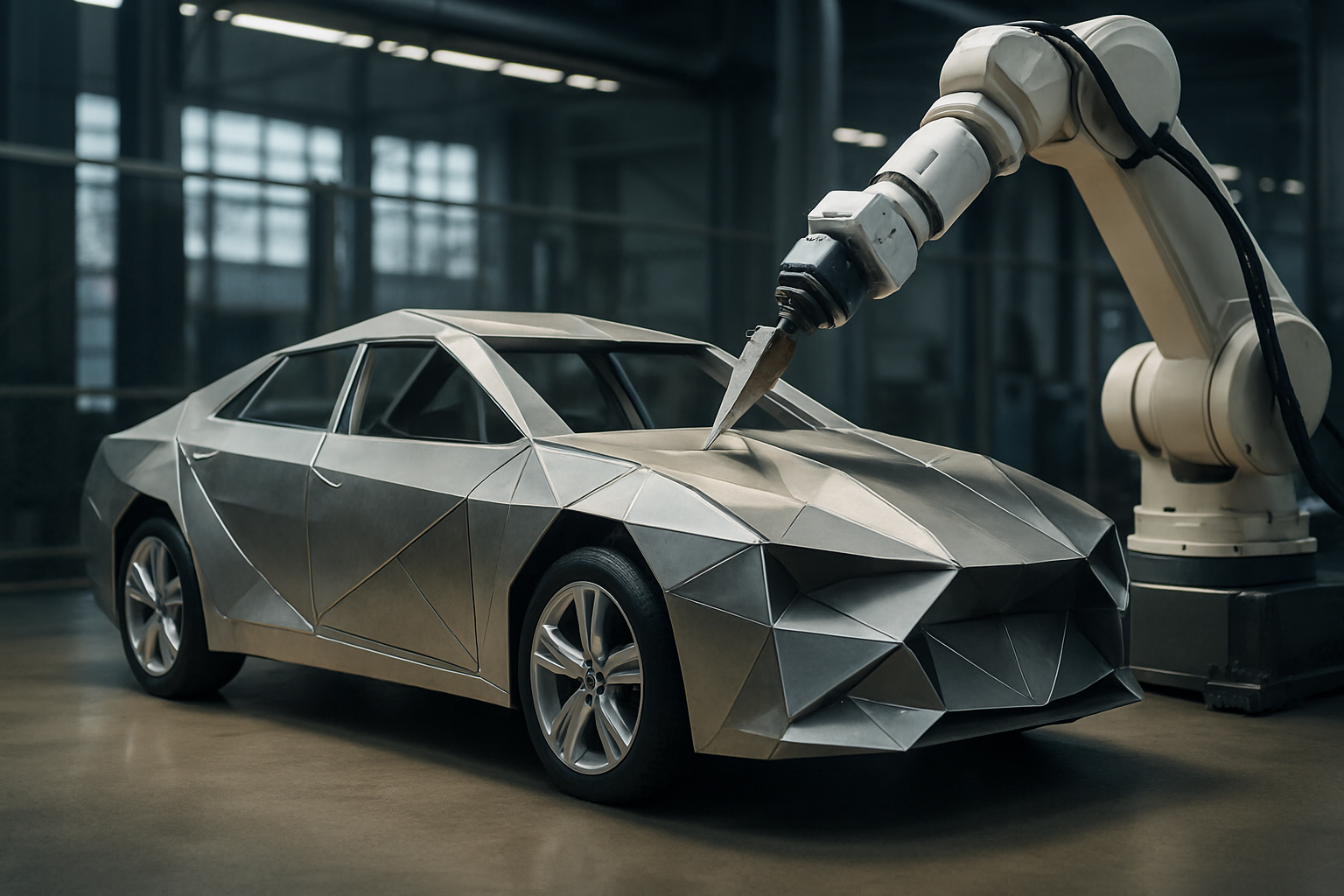The Hidden Artistry of Automotive Paint Technology
Beneath the gleaming exterior of every car lies a world of innovation and artistry that often goes unnoticed. The automotive paint industry has undergone a revolutionary transformation, blending cutting-edge chemistry with precision engineering to create finishes that are not just visually stunning, but also technologically advanced. This fusion of science and aesthetics has redefined the way we perceive and interact with automotive exteriors, turning each vehicle into a canvas of innovation.

The Evolution of Automotive Finishes
The journey of automotive paint technology is a testament to human ingenuity. In the early days of the automobile, paint was primarily used for protection, with little consideration for aesthetics. Early cars were often painted with brushes, resulting in uneven finishes that were prone to chipping and fading. The introduction of spray painting in the 1920s marked a significant leap forward, allowing for more uniform application and smoother finishes.
As the automotive industry grew, so did the demands placed on paint technology. The need for durability, weather resistance, and aesthetic appeal drove continuous innovation. The mid-20th century saw the development of acrylic lacquers and enamels, which offered improved gloss and durability. However, these paints were not without their drawbacks, including high VOC emissions and lengthy drying times.
The Science Behind Modern Automotive Paints
Today’s automotive paints are marvels of chemical engineering. The typical paint system consists of multiple layers, each with a specific function. The primer layer provides adhesion and corrosion protection, while the basecoat delivers color and special effects. The clearcoat, the final layer, offers protection against UV rays, chemicals, and physical damage while enhancing the overall gloss and depth of the finish.
One of the most significant advancements in recent years has been the development of water-based paints. These environmentally friendly alternatives have significantly reduced VOC emissions without compromising on quality or durability. The shift to water-based systems has required extensive research and development to overcome challenges such as longer drying times and increased sensitivity to environmental conditions during application.
Nanotechnology: The Microscopic Revolution
Nanotechnology has emerged as a game-changer in automotive paint technology. By manipulating materials at the molecular level, scientists have created paints with extraordinary properties. Self-healing paints, for instance, contain microcapsules filled with a healing agent. When the paint is scratched, these capsules rupture, releasing the agent and effectively “healing” the damage.
Another exciting application of nanotechnology is in the development of hydrophobic coatings. These ultra-water-repellent finishes cause water to bead up and roll off the surface, taking dirt and debris with it. This not only keeps the car cleaner for longer but also reduces the need for frequent washing, conserving water and reducing the use of potentially harmful cleaning chemicals.
Color-Changing Paints: The Future of Personalization
One of the most captivating developments in automotive paint technology is the advent of color-changing paints. These innovative finishes use special pigments that can alter their appearance based on various factors such as viewing angle, lighting conditions, or even electrical stimuli. Thermochromic paints, for example, change color in response to temperature variations, while photochromic paints react to different light intensities.
The potential for personalization with these technologies is immense. Imagine a car that changes color to match your mood or outfit, or adapts its appearance to blend in with its surroundings. While still in the early stages of development, color-changing paints represent a exciting frontier in automotive customization and could revolutionize the way we think about vehicle aesthetics.
Environmental Considerations and Sustainability
As the automotive industry faces increasing pressure to reduce its environmental impact, paint technology has become a key area of focus. Beyond the shift to water-based paints, manufacturers are exploring ways to make the painting process more sustainable. This includes developing paints that cure at lower temperatures, reducing energy consumption in paint shops, and creating finishes that are easier to recycle at the end of a vehicle’s life.
Some companies are even experimenting with bio-based paints, derived from renewable resources such as plant oils and agricultural waste. These eco-friendly alternatives aim to reduce dependence on petrochemicals while maintaining the high performance standards expected in the automotive industry.
The Intersection of Art and Technology
The evolution of automotive paint technology has blurred the lines between engineering and artistry. Modern paint shops are a symphony of robotics and human expertise, where precision meets creativity. Advanced color-matching systems can recreate virtually any hue with incredible accuracy, while specialized techniques like tricoat finishes and candy paints create depth and visual effects that were once impossible to achieve.
This marriage of art and technology extends beyond the factory floor. Custom paint jobs have become a form of personal expression, with skilled artisans using cutting-edge paints and techniques to create rolling masterpieces. From intricate airbrush designs to color-shifting wraps, the possibilities for automotive customization are limited only by imagination.
Challenges and Future Directions
Despite the remarkable progress in automotive paint technology, challenges remain. Durability in extreme environments, resistance to new types of pollutants, and the need for ever-more efficient application processes are ongoing concerns. Additionally, as vehicles become more technologically advanced, paint systems must evolve to accommodate features like integrated sensors and smart surfaces without compromising aesthetics or functionality.
Looking ahead, the future of automotive paint technology is bright with possibility. Research into smart coatings that can change properties on demand, paints that generate electricity from sunlight, and finishes that actively purify the air around them are just a few of the exciting developments on the horizon. As vehicles continue to evolve, so too will the technologies that make them both beautiful and functional.
The hidden artistry of automotive paint technology is a testament to human creativity and innovation. From its humble beginnings as a mere protective coating to its current status as a high-tech, multifunctional system, automotive paint has come a long way. As we look to the future, it’s clear that the surfaces of our vehicles will continue to be canvases for technological advancement, blending form and function in ever more impressive ways.





